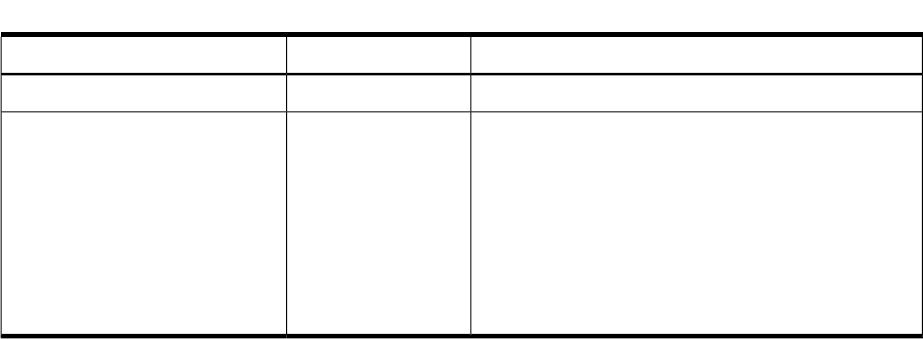LDAP-UX Client Services B.04.15 with Microsoft Windows Active Directory Server Administrator's Guide (edition 8)
Table Of Contents
- LDAP-UX Client Services B.04.15 with Microsoft Windows Active Directory Administrator's Guide
- Table of Contents
- Preface
- 1 Introduction
- 2 Installing LDAP-UX Client Services
- Before You Begin
- Summary of Installing and Configuring LDAP-UX Client Services
- Planning Your Installation
- Installing LDAP-UX Client Services on a Client
- Configuring Active Directory for HP-UX Integration
- Step 1: Install Active Directory
- Step 2: Install SFU 2.0, 3.0 or 3.5 including Server for NIS
- Step 3: Create a Proxy User
- Step 4: Add an HP-UX Client Machine Account to Active Directory
- Step 5: Use ktpass to Create the Keytab File for the HP-UX client machine
- Step 6: Add POSIX Attributes into the Global Catalog
- Importing Name Service Data into Your Directory
- Configuring LDAP-UX Client Services
- Step 1: Run the Setup Program
- Step 2: Install the PAM Kerberos Product
- Step 3: Configure Your HP-UX Machine to Authenticate Using PAM Kerberos
- Step 4: Configure the Name Service Switch (NSS)
- Step 5: Configure the PAM Authorization Service Module (pam_authz)
- Step 6: Configure the Disable Login Flag
- Step 7: Verify LDAP-UX Client Services for Single Domain
- Step 8: Configure Subsequent Client Systems
- Configuring the LDAP-UX Client Services with SSL or TLS Support
- Downloading the Profile Periodically
- 3 Active Directory Multiple Domains
- 4 LDAP-UX Client Services with AutoFS Support
- 5 LDAP Printer Configurator Support
- 6 Dynamic Group Support
- 7 Administering LDAP-UX Client Services
- Using the LDAP-UX Client Daemon
- Integrating with Trusted Mode
- SASL GSSAPI Support
- PAM_AUTHZ Login Authorization
- Policy And Access Rules
- How Login Authorization Works
- PAM_AUTHZ Supports Security Policy Enforcement
- Policy File
- Policy Validator
- Dynamic Variable Support
- Constructing an Access Rule in pam_authz.policy
- Static List Access Rule
- Dynamic Variable Access Rule
- Security Policy Enforcement with Secure Shell (SSH) or r-commands
- Adding Additional Domain Controllers
- Adding Users, Groups, and Hosts
- User and Group Management
- Displaying the Proxy User's Distinguished Name
- Verifying the Proxy User
- Creating a New Proxy User
- Displaying the Current Profile
- Creating a New Profile
- Modifying a Profile
- Changing Which Profile a Client is Using
- Creating an /etc/krb5.keytab File
- Considering Performance Impacts
- Client Daemon Performance
- Troubleshooting
- 8 Modifying User Information
- 9 Mozilla LDAP C SDK
- A Configuration Worksheet
- B LDAP-UX Client Services Object Classes
- C Command, Tool, Schema Extension Utility, and Migration Script Reference
- LDAP-UX Client Services Components
- Client Management Tools
- LDAP User and Group Management Tools
- Environment Variables
- Return Value Formats
- Common Return Codes
- The ldapuglist Tool
- The ldapugadd Tool
- The ldapugmod Tool
- The ldapugdel Tool
- The ldapcfinfo Tool
- LDAP Directory Tools
- Schema Extension Utility
- Name Service Migration Scripts
- Unsupported Contributed Tools and Scripts
- D Sample PAM Configuration File
- E Sample /etc/krb5.conf File
- F Sample /etc/pam.conf File for HP-UX 11i v1 Trusted Mode
- G Sample /etc/pam.conf File for HP-UX 11i v2 Trusted Mode
- H Sample PAM Configuration File for Security Policy Enforcement
- Glossary
- Index

Table 7-1 Field Syntax in an Access Rule (continued)
<object><type><action>
No value is required.
otherdeny, allow, <pam_code>
<function_name>
Specifies the function name in <library_name> that
is called to evaluate certain policy settings of the login
user.
Example:
status:ads:check_ads_polcy
See the “Account and Password Security Policy
Enforcement “ section for details.
<library_name>
The valid value for
this field can be rhds
or ads.
status
The following describes three fields defined in an access rule in details:
<action> This field defines a user's final access permission if an access rule is evaluated to
be true. Valid entries can be allow, deny and PAM return codes. Allow and deny
are character strings and the value itself is not case sensitive. In additional to the
general return codes, allow and deny, LDAP-UX Client Services B.04.10 or later,
PAM_AUTHZ supports the meaningful PAM return codes to the application which
called the PAM API. PAM_AUTHZ does not evaluate an access rule if no option
is defined or if the action field contains an invalid string.
<action> field can be one of following values:
allow
This option indicates that a user is granted the login authorization.
deny
This option indicates that a user is denied the login authorization.
<pam_code>
One of the following meaningful PAM return codes can be specified in the
<action> field, the PAM return codes are character strings:
• PAM_SUCCESS
• PAM_PERM_DENIED
• PAM_MAXTRIES
• PAM_AUTH_ERR
• PAM_NEW_AUTHTOK_REQD
• PAM_AUTHTOKEN_REQD
• PAM_CRED_INSUFFICIENT
• PAM_AUTHINFO_UNAVAIL
• PAM_USER_UNKNOWN
• PAM_ACCT_EXPIRED
• PAM_AUTHTOK_EXPIRED
For example, if the PAM_AUTHZ policy rule indicates that an account has been
locked out or a password has expired, PAM_AUTHZ can return an appropriate
PAM error code instead of a general deny error code.
<type> The value in this field represents the type of access rule. It defines what kinds of
user information that PAM_AUTHZ needs to look for. The value also helps to
determine the correct syntax in the following <object> field.
The following describes the valid values for this field:
unix_user, unix_local_user, unix_group, netgroup, ldap_group
112 Administering LDAP-UX Client Services










